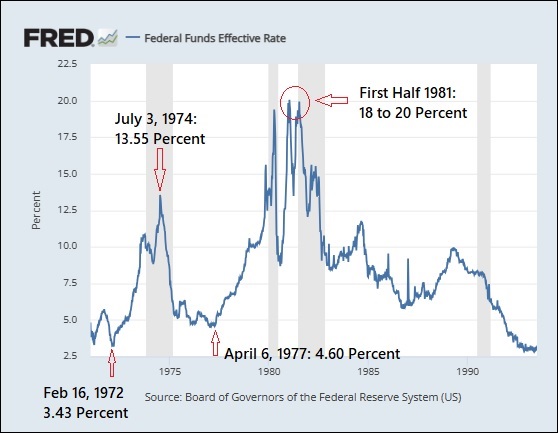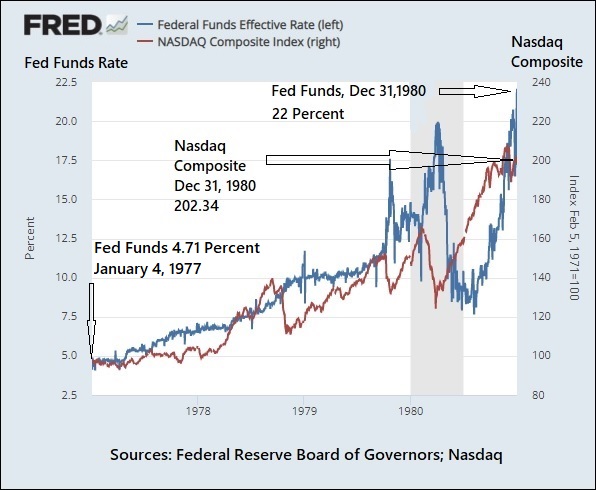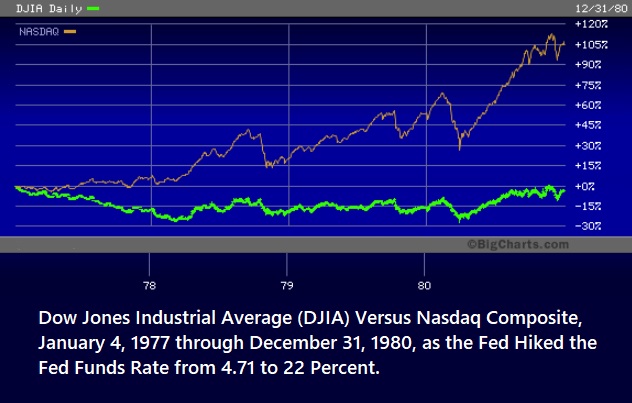By Pam Martens and Russ Martens: July 5, 2023 ~
The top chart above shows one of the most erratic eras in Federal Reserve policy-making history. In the 70s and early 80s, the Fed would slam on the brakes to bring down inflation by raising its benchmark rate (known as the Fed Funds rate), then slam its foot on the gas to revive the economy by cutting the Fed Funds rate. But because the Fed stopped raising rates too soon each time, it had to then raise rates to an ever staggering level to curb runaway inflation, eventually reaching over 20 percent in 1981.
Today, the Fed is woefully mindful of these mistakes. It is hoping to signal that it is planning higher interest rates for longer and follow through on that signal without killing the economy, and the markets, and the banks, and consumer confidence in the process.
The Fed has one giant albatross around its neck that it didn’t have in the 70s. The Individual Retirement Account (IRA) and 401(k) were created in the 70s. As of March 31 of this year, IRAs held $12.5 trillion in assets, according to the Investment Company Institute, while 401(k)s and similar forms of defined contribution plans held $9.8 trillion. When Americans see their retirement plans shrinking on their monthly or quarterly statements because the stock market is slumping because of Fed rate hikes, that can have a negative impact on consumer spending.
The Fed is very much aware that consumer spending represents more than two-thirds of GDP in the United States. (As of March 2023, consumer spending represented 68.37 percent of GDP.)
So, despite all of that talk from the Fed about its twin policy mandates of maximum employment and stable prices, it knows that if it kills the stock market it’s going to kill consumer confidence, which will, in turn, negatively impact GDP growth. With that in mind, read our article on how, for the first time in its history, the New York Fed added a second trading desk in Chicago, not far from the S&P 500 futures market.
Which brings us to another curiosity – the inexplicable rise in the Nasdaq versus the lackluster performance of the Dow Jones Industrial Average during the warp speed Fed interest rate hikes in the 70s and early 80s and today. Year-to-date, through the close on Monday, July 3, Nasdaq had soared 32 percent while the Dow Jones Industrial Average is up a meager 3.8 percent.
As the second and third charts above show, this same curiosity occurred from January 1977 through December 31, 1980.
There is no sound rationale for this divergence in stock markets. There is only a four-letter word that explains the Nasdaq’s behavior in both eras: hype. Today’s surge in Nasdaq is being fueled by a handful of tech names, being hyped by the alleged wonders of Artificial Intelligence. In the prior era, it was an assortment of hype, including the potential for takeovers.




